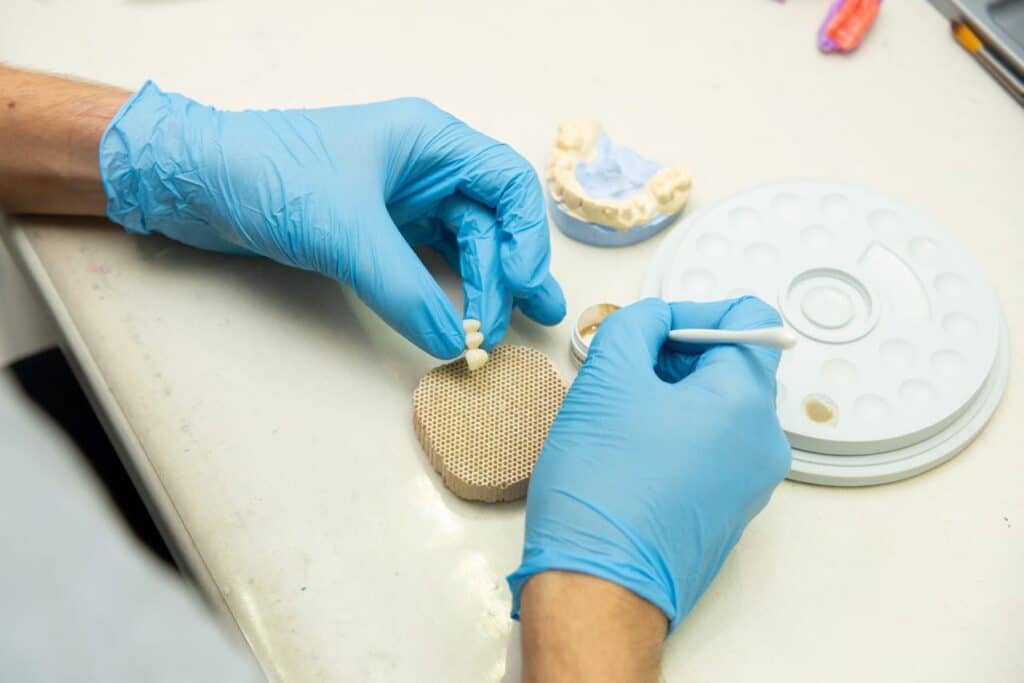Missing teeth can significantly affect your quality of life. They can make simple tasks like eating and speaking difficult. And let’s not forget the impact on your smile. Fortunately, dental bridges offer a reliable way to fill those gaps and restore both function and appearance.
A dental bridge is a prosthetic device used to replace one or more missing teeth. The bridge is anchored in place by the teeth on either side of the gap. These anchoring teeth, known as abutments, are crowned to provide support for the bridge. The false tooth or teeth in the middle, called pontics, are designed to look like natural teeth, providing a seamless appearance.
Understanding dental bridges and their benefits can help you make an informed decision about your oral health. They don’t just improve your smile; they also help maintain the structure of your face and prevent remaining teeth from shifting out of place. Knowing what dental bridges can do for you is the first step toward a healthier mouth and a more confident smile. So, let’s dive into it and explore why dental bridges are a wonderful option for replacing missing teeth.
Understanding Dental Bridges
A dental bridge is a common solution for replacing one or more missing teeth. It works by using the teeth on either side of a gap as anchors. These anchor teeth, called abutment teeth, are crowned to hold the bridge securely in place. Between the abutment teeth, the bridge features one or more false teeth called pontics. These pontics look and function like your natural teeth.
The materials used for dental bridges vary. They can be made from porcelain, ceramic, or even a combination of materials. The choice often depends on where the bridge will be placed in your mouth and your specific needs and preferences. Porcelain or ceramic bridges are popular because they can be coloured to match your natural teeth, offering a seamless appearance.
Understanding how dental bridges work and the components involved can help you see why they’re a reliable option for replacing missing teeth. Knowing the basics helps you feel more confident about the process and what it involves. If you’re missing teeth, a dental bridge could be the solution you’ve been looking for to restore your smile and functionality.
Types of Dental Bridges
There are several types of dental bridges available, each designed to meet different needs. Here’s a quick overview of the most common types:
1. Traditional Bridges: These are the most common type and involve creating a crown for the tooth on either side of the missing tooth, with a pontic in between. Traditional bridges are usually made of porcelain fused to metal or ceramics.
2. Cantilever Bridges: These are used when there is only one adjacent tooth next to the missing tooth. They are less common and primarily used when there’s no other option but to support the bridge from one side.
3. Maryland Bonded Bridges: Also known as a resin-bonded bridge, this type has a metal or porcelain framework with wings on either side. These wings are bonded to the back of your existing teeth. This type is often used for missing front teeth because it doesn’t require crowns on the adjacent teeth.
4. Implant-Supported Bridges: These are similar to traditional bridges but are supported by dental implants rather than natural teeth. This type is used when more than one tooth is missing. Implant-supported bridges are more stable and do not rely on neighbouring teeth for support.
Understanding the different types of dental bridges can help you and your dentist determine which option is best suited for your dental needs. Each type has its own set of advantages, so discussing your specific situation with your dentist will help you make the best choice.
Benefits of Dental Bridges
Dental bridges offer several benefits that make them a popular choice for replacing missing teeth. One of the main advantages is the restoration of your smile. Missing teeth can make you feel self-conscious, but a dental bridge fills the gap and helps bring back your confident smile.
Another big benefit is improved chewing and speaking. When you lose a tooth, it can be difficult to chew food properly or pronounce certain words. A dental bridge can help restore the natural function of your mouth, making eating and speaking easier and more comfortable.
Dental bridges also help maintain the shape of your face. When a tooth is missing, the surrounding bone can start to deteriorate over time, leading to a sunken appearance. By providing support to the facial structure, dental bridges preserve the natural shape of your face.
Additionally, dental bridges prevent neighbouring teeth from shifting. When a gap is left unfilled, adjacent teeth may move into the empty space, causing misalignment and other dental issues. By filling the gap, a dental bridge keeps your teeth in their proper positions.
The Process of Getting a Dental Bridge
Getting a dental bridge involves several steps, usually completed over a few dental visits. Understanding the process can help you feel more comfortable and prepared.
First, your dentist will prepare the abutment teeth by removing a small portion of enamel to make room for the crowns. This step is crucial because it ensures that the bridge will fit properly and securely. Your dentist will then take impressions of your teeth, which are used to create a custom-fit bridge. While the permanent bridge is being made, you will typically receive a temporary bridge to protect the exposed teeth and gums.
Once your permanent bridge is ready, your dentist will remove the temporary bridge and check the fit of the new one. They will make adjustments as needed to ensure comfort and proper bite alignment. When everything looks good, the new bridge will be cemented in place. Your dentist will give you instructions on how to care for your bridge to ensure its longevity.
Throughout the entire process, it’s important to maintain good oral hygiene and follow your dentist’s care instructions. Regular dental check-ups are crucial to monitor the health of your bridge and surrounding teeth.
Final Thoughts
Dental bridges are an effective and popular solution for replacing missing teeth. They not only restore your smile but also improve chewing and speaking abilities, maintain the shape of your face, and prevent neighbouring teeth from shifting. By understanding the different types of dental bridges and the process involved, you can make an informed decision and feel more confident about your dental health.
At Pickering Dental Services, we’re here to help you achieve a healthy and beautiful smile. If you’re considering a dental bridge or need more information, feel free to reach out to us. Our experienced professionals are ready to guide you through the process and ensure you get the best care possible. Contact Pickering Dental Services today to schedule your consultation and take the first step towards a restored smile.



